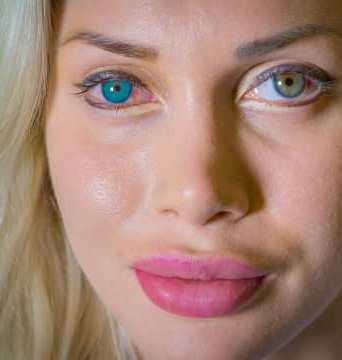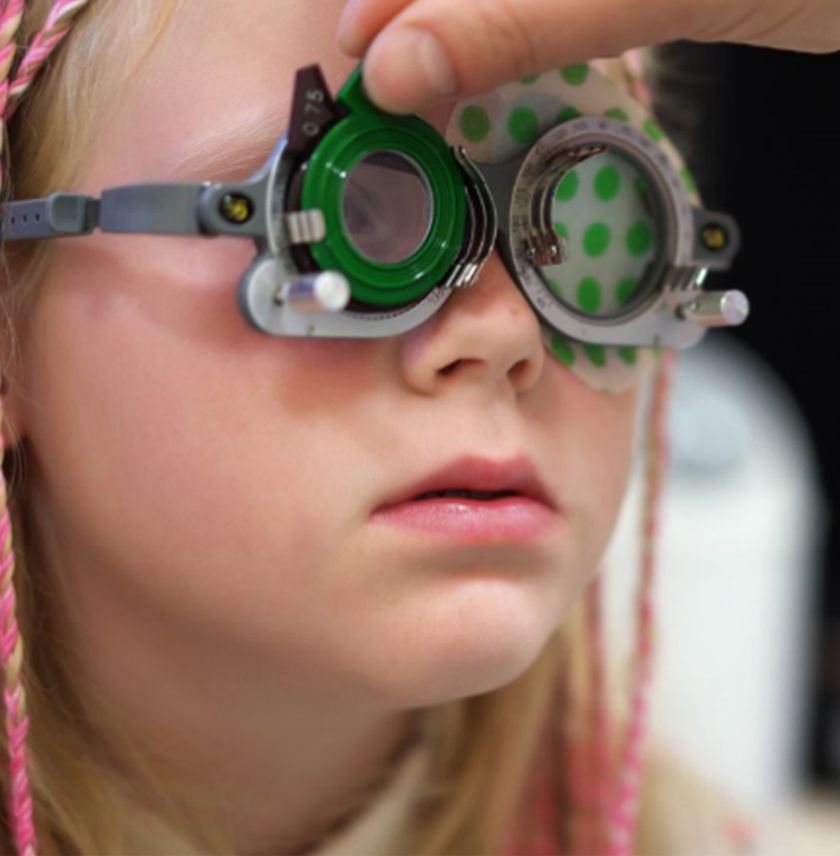

Africa is facing serious health problems with a high burden and few resources. Natural disasters, economic dilemmas, and conflicts exacerbate the health situation on the continent, resulting in poor health outcomes. Most of the population in Africa suffers from unwarranted diseases, mainly because of poor living conditions and scarce health care provision. Also, non-communicable diseases such as retinopathia pigmentosa are on the rise. In North Africa, factors like poor diet, obesity, and smoking play a vital role. Thus, there is a great need for better healthcare with related disease prevention strategies.
The need for more modern medical facilities in Africa forces many patients to travel abroad for treatment. India has become a top destination for African patients due to the low costs, experienced doctors, and modern technology. Retinitis pigmentosa is one such disease which causes loss of vision and often requires specialised treatment that is unavailable locally. Hospitals here provide successful retinitis pigmentosa treatment in India with modern therapies and surgeries. This attraction pulls patients who face long waiting lines or inadequate treatment back home in Africa.
Good health care at a much cheaper price is possible in India compared to other countries. Hence, medical tourism is very popular in the country. Patients from Africa come and go back home healthy, relieving themselves of serious diseases. In many cases, going to India becomes a life-changing choice, bringing people hope and better health results.
Retinitis pigmentosa is a genetic eye disease that causes progressive vision loss. It is one of the diseases causing inherited retinal degeneration. The retina is the thin innermost layer at the back of the eye; it contains photoreceptor cells called rods and cones. These convert light into signals sent to the brain. In retinitis pigmentosa disease, these photoreceptors slowly degenerate with the decline of vision.
Most people experience night blindness, an inability to see in dimness or darkness, as the first sign of retinitis pigmentosa. What differentiates this condition from other conditions with night blindness, like Cataracts and Glaucoma, is that the patient gradually suffers a decrease in peripheral vision with this condition. This is known as "tunnel vision." Often, central vision becomes poor, making reading impossible and threading a needle impossible. Difficulty in colour vision is also common in RP.
The condition varies differently in everyone, and the symptoms typically arise during childhood and up to the age of 30. There is no cure yet, but an early diagnosis can help with symptom management. The advancement of the retinitis pigmentosa treatment in India focuses on its slowing down. Retinitis Pigmentosa incorporates Usher syndrome and Bardet-Biedl syndrome. Medically termed as retinopathia pigmentosa, it is a very broad condition that can cause permanent blindness if not treated.
Around sixty distinct genes may be responsible for the various kinds of retinitis pigmentosa. There are three distinct ways in which parents might give their children the genes that cause the problem:

The gene responsible for the condition is present in both of the child's parents, yet neither of the parents displays any of the symptoms associated with the condition. This kind of retinitis pigmentosa will be present in a kid if it receives both faulty copies of the gene from its parents, one copy from each parent. Due to the requirement for 2 copies of the problematic gene, there is a one in four risk that the condition will impact each kid in the family.
A woman who possesses the gene that causes the disease is capable of passing it on to her offspring. They have an equal chance of obtaining it, which is exactly fifty percent. The vast majority of carriers of the gene will not experience any symptoms. On the other hand, about one person in every five will exhibit some moderate symptoms. The disease often manifests in a more severe form in males.
The development of this kind of retinitis pigmentosa needs just a single copy of the gene that causes the condition. There is a one in two probability that each kid will inherit that gene from a parent who has that gene.
Vision loss may occur for several different reasons when you have retinitis pigmentosa, including the following symptoms:
One of the symptoms of retinitis pigmentosa in patients is their reduced ability to see at night. Night blindness is a condition in which a person cannot see anything in the dark. During the day, your eyesight may not be affected at all. As your night vision deteriorates, getting used to the dark will take longer. When driving in twilight or at night, you can have problems avoiding obstacles or stumbling over things. You may also have difficulty seeing in dimly lit environments such as movie theatres and other rooms.
Loss of sight in the center of the field. In addition to that, some individuals struggle with their primary vision. This might make it difficult to perform fine motor skills, such as reading or sewing a needle if you suffer from this condition.
The gradual disappearance of eyesight in the periphery (the sides). This phenomenon is referred to as tunnel vision. As you travel about, you can discover that you run into various items. This is because you cannot see the ground and the items around you.
Vision issues, particularly with colors. It's also possible that some patients have problems distinguishing between hues.
If you detect eye-light changes, you should see your primary care physician or an optometrist. If your primary care physician suspects that you have retinitis pigmentosa, they may suggest that you see an eye doctor. For an ophthalmologist to diagnose your condition, they may request that you take a series of eye exams. These exams may include tests to evaluate your peripheral vision, color vision, and an inspection of the retina. Your eye doctor will choose the most effective course of retinitis pigmentosa treatment in India for you depending on the following factors:
Patients may mistake the signs of retinitis pigmentosa for the symptoms of a variety of other diseases or medical disorders. Always seek the advice of a specialist in eye healthcare for a diagnosis. There is currently no cure or medication specifically designed for retinitis pigmentosa treatment. Therefore, if you wear sunglasses that block UV rays, you can protect the retina in your eyes, which may help postpone the onset of symptoms.
A retinal prosthesis, often known as an artificial retina, has been created for patients whose illness has progressed to a very advanced stage and who have had significant visual loss. Discuss this matter in further detail with the eye care professional who treats you.
In recent years, several advancements have been achieved in regenerative medicine in India (IRD), including the advent of gene therapy. The options for retinitis pigmentosa treatment in India include:
At this time, neither a cure nor a singular therapy option is indicated for retinitis pigmentosa treatment. The following are some of the things that a physician could suggest to assist patients in coping with the condition:


We take pride in assuring our patients' complete safety during these treatments and providing them with the best possible post-operative care. Our goal is to ensure that our patients receive the greatest possible results at the most affordable retinitis pigmentosa treatment in India.
Dr. Suraj Munjal is the best eye specialist in India. He has done many refractive surgery, keratoconus surgery, and cornea transplants with a wide variety of complicated cases. He also has expertise in all types of LASIK eye surgeries.

Dr. Suwarn Chetan is an ophthalmologist specializing in Occuloplasty and LASIK surgeries. He is one of the top eye specialists in India for cataract eye surgery, refractive eye surgery, and pediatric ophthalmology.


Dr. Neeraj Sanduja is the most experienced eye specialist in India. His expertise includes LASIK surgeries, diabetic retinopathy, corneal transplant, ocular trauma, retinopathy of prematurity, and macular holes.

Every year, many people from African countries like Nigeria, Ethiopia, and Tanzania visit India to get retinitis pigmentosa treatment. Eye specialists for retinitis pigmentosa in India are internationally certified and have many years of training and knowledge. Eye hospitals in India are equipped with the most modern technology to be able to deliver perfect treatment. For retinitis pigmentosa, treatments like laser surgery, ROP screening, green laser, FFA, and retina Cryopexy are available in India. The cost of retinitis pigmentosa treatment in India is very low and thus very beneficial to African patients who can now acquire efficient, high-quality medical services for less money. The below provides an average cost for retinitis pigmentosa in India:
| Treatment | Cost |
|---|---|
| Retinitis Pigmentosa Treatment in India | $3,000 |
Genetic level analysis may be done for RP. It is useful in determining the likelihood of the condition being passed down from parent to child. In addition to this, it assists in arriving at a correct diagnosis. A patient who has received an early diagnosis is in a stronger place to comprehend which developing therapeutic methods and drug testing is most relevant for them since they have a better understanding of their condition.
The retinitis pigmentosa treatment in India using stem cells consists of injecting vitreous, gel-like material in the centre of the eye with retinal progenitors and stem cells while becoming retinal cells. Researchers are under the impression that the cells will secrete proteins that will maintain the patient's current photoreceptors' health, halting the progression of their degeneration and maintaining the patient's eyesight.
According to the researchers, cones that have ceased processing light but have not yet completely deteriorated may also be saved by the proteins. Cones are the kind of photoreceptors that enable people to read, identify faces, and function normally in well-lit environments.


Get the Eye color you've always dreamed of
Connect Today
Opt for successful eye color change surgery
Plan Surgery
Remove glasses with SMILE LASIK
Get Cost